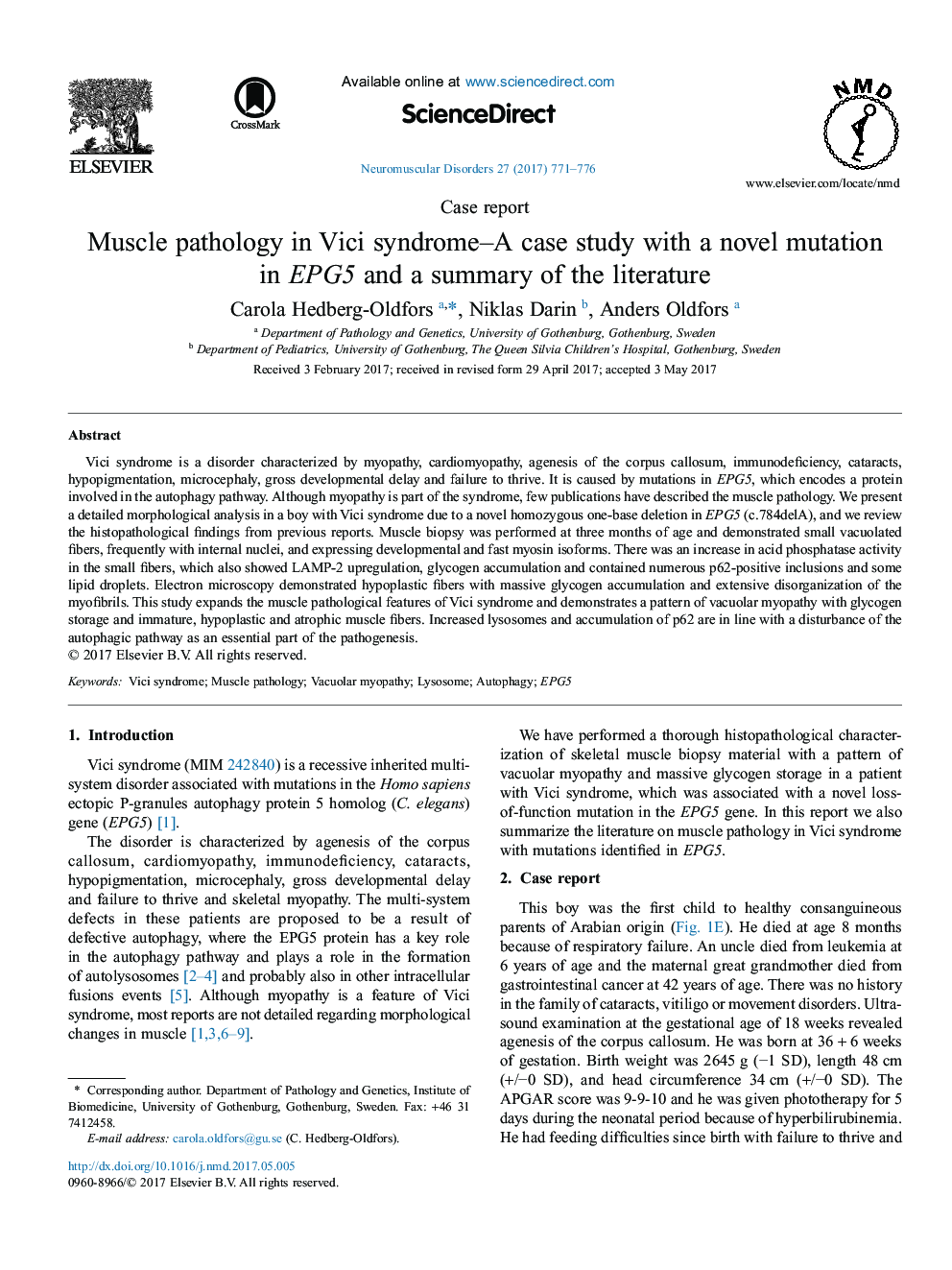| Article ID | Journal | Published Year | Pages | File Type |
|---|---|---|---|---|
| 5632017 | Neuromuscular Disorders | 2017 | 6 Pages |
â¢This paper describes a comprehensive study of muscle pathology in Vici syndrome.â¢A summary of muscle pathology findings in previously reported cases with genetically confirmed Vici syndrome.â¢A detailed clinical description in a patient with Vici syndrome.â¢A novel mutation in the Homo sapiens ectopic P-granules autophagy protein 5 homolog (C. elegans) gene (EPG5).
Vici syndrome is a disorder characterized by myopathy, cardiomyopathy, agenesis of the corpus callosum, immunodeficiency, cataracts, hypopigmentation, microcephaly, gross developmental delay and failure to thrive. It is caused by mutations in EPG5, which encodes a protein involved in the autophagy pathway. Although myopathy is part of the syndrome, few publications have described the muscle pathology. We present a detailed morphological analysis in a boy with Vici syndrome due to a novel homozygous one-base deletion in EPG5 (c.784delA), and we review the histopathological findings from previous reports. Muscle biopsy was performed at three months of age and demonstrated small vacuolated fibers, frequently with internal nuclei, and expressing developmental and fast myosin isoforms. There was an increase in acid phosphatase activity in the small fibers, which also showed LAMP-2 upregulation, glycogen accumulation and contained numerous p62-positive inclusions and some lipid droplets. Electron microscopy demonstrated hypoplastic fibers with massive glycogen accumulation and extensive disorganization of the myofibrils. This study expands the muscle pathological features of Vici syndrome and demonstrates a pattern of vacuolar myopathy with glycogen storage and immature, hypoplastic and atrophic muscle fibers. Increased lysosomes and accumulation of p62 are in line with a disturbance of the autophagic pathway as an essential part of the pathogenesis.
